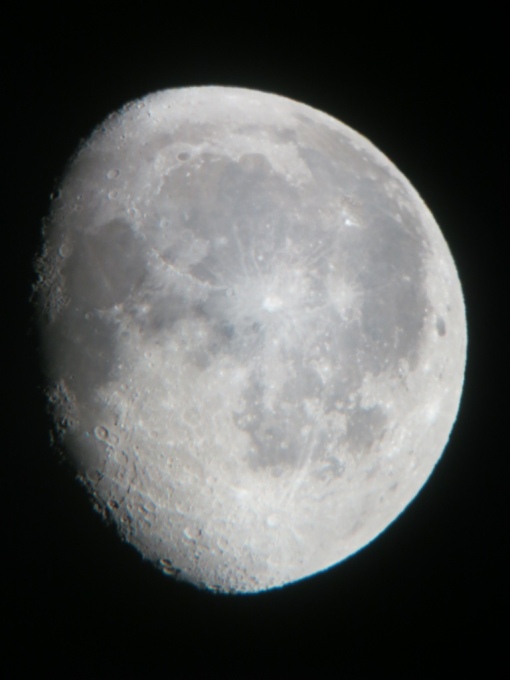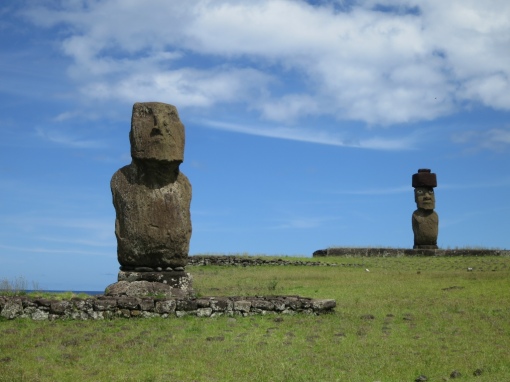
We got to San Pedro de Atacama after our tour of Southern Bolivia, and the first orders of business were showering, laundry, and enjoying warm weather at a paltry altitude of 2400 meters. This is the driest desert in the world, so by warm I mean balls hot. Most people do San Pedro in 2-3 days and jam pack all the popular tours, but we actually did the opposite. We stayed for over 4 days in order to relax and catch up with life and because we arrived on the day of full moon, we needed to wait at least three days to be able to do an astronomical tour which was high priority. And then because of bus schedules (no buses to Salta on Thusdays during this season), we had to wait an extra day. Overall, San Pedro (despite its small size and exorbitant prices by South American standards) has become one of my favorite stops based on the quality of the few tours we did do as well as literally being an ideal oasis to spend a few days and recharge.
San Pedro de Atacama
2 02 2013Comments : 1 Comment »
Tags: lagoons, salt flats, San Pedro, sandboarding, space obs, star gazing
Categories : Chile, Play-by-plays, South America
Moai Money…Moai Problems
24 12 2012 After a day of unrelenting pain on a bicycle we decided to return them and go the 1% way – we got an ATV!!! We set off towards the eastern coastof the island to visit one of the highlights of Rapa Nui’s national park, Rano Raraku. Rano Raraku is a volcanic crater whose stone quarry was used in the creation of more than 95% of Rapa Nui’s Moai. The site is littered with dozens of standing and fallen Moai; some still embedded in the side of the mountain and never erected. While most Moai structures are fairly close to Rano Raraku, there are many that were transported a few hundred meters across the island. No one really knows how these huge slabs were moved, but oral legend is that a divine power commanded them to stand up and walk. Scientists though believe they were “walked” to the other side of the island with the use of ropes, pulleys and man power. Read the rest of this entry »
After a day of unrelenting pain on a bicycle we decided to return them and go the 1% way – we got an ATV!!! We set off towards the eastern coastof the island to visit one of the highlights of Rapa Nui’s national park, Rano Raraku. Rano Raraku is a volcanic crater whose stone quarry was used in the creation of more than 95% of Rapa Nui’s Moai. The site is littered with dozens of standing and fallen Moai; some still embedded in the side of the mountain and never erected. While most Moai structures are fairly close to Rano Raraku, there are many that were transported a few hundred meters across the island. No one really knows how these huge slabs were moved, but oral legend is that a divine power commanded them to stand up and walk. Scientists though believe they were “walked” to the other side of the island with the use of ropes, pulleys and man power. Read the rest of this entry »
Comments : 2 Comments »
Tags: ahu, atv, bicycle, Easter island, Hanga Roa, moai, Rano Raraku, Rapa Nui, tongariki
Categories : Chile, Play-by-plays, South America
Rapa Nui, I Just Met You, And This Sounds Crazy…
22 12 2012Day 1
We landed at about 6am but didn’t get settled in till 9 or so. Saw a very romantic sunrise with our 400best friends from the red eye. Immediately loved the sunshine shorts and tshirt weather and in true Natalya fasion underestimated the potency of the sun (sunscreen is a must, I am sporting some exotic tan lines now). Read the rest of this entry »
Comments : 3 Comments »
Tags: ahu Togariki, Anakena beach, Easter island, Hanga Roa, isla de pascua, Maori Tupuna, Orongo village, Ovaje beach, rank Kau, Rapa Nui, Vai Te Mihi
Categories : Chile, Play-by-plays, South America
Easter Island
21 12 2012Rapa Nui, as it is called in the local language, is really a hidden gem. Isolated by thousands of kilometers from landmass and other islands, it offers an escape from everything rote, preconceived, expected. Unlike other island destinations, big name resorts do not hog the best real estate. There are modest hotels, cabanas, and some eco lodges. Everything on the island is at face value. You see how the locals live, because instead of being sheltered behind the gates of a resort, you can actually walk around town, hike ,bike, drive fully confident in the safety and you’ll be pleasantly surprised when everyone you pass waves hello. The island is so small you can see most of the sights in 3-4 days, but you can definitely spend so much more time just hanging out, diving, surfing, etc. The entire island is an archeological sight…an open air museum! Read the rest of this entry »
Comments : 3 Comments »
Tags: biking, Chile, Easter island, hiking, isla de pascua, moai, Rapa Nui
Categories : Chile, South America, Summaries
Patagonia Recap
15 12 2012Two weeks in Patagonia flew by. Yus and I spent them doing the W Trek in Torres del Paine National Park and checking out El Calafate and El Chalten. Below are some stats and fun facts. Read the rest of this entry »
Comments : Leave a Comment »
Tags: Argentina, Chile, el Calafate, el Chalten, hiking, parque nacional Los glaciares, Patagonia, Perito Moreno, puerto Natales, Torres del Paine, trekking, w trek
Categories : Argentina, Chile, South America, Summaries
W in Pics
12 12 2012Las Torres del Paine in photos for those too lazy to read the post on the W Trek. Read the rest of this entry »
Comments : 5 Comments »
Tags: camping, Chile, hiking, Patagonia, Torres del Paine, trekking, w circuit, w trek
Categories : Chile, Photobombs, South America
Torres del Paine “W”
11 12 2012Torres del Paine Park in Chile is popular for its “W” trek– the routes for hiking make a W shape. I actually see it more as boobs-shaped, so my description of what we did will entail both metaphors. Typically people do the trek in 4-5 days. There are options for free camping, paid camping, and refugios, which are more like cabins with amenities. Read the rest of this entry »
Comments : 2 Comments »
Tags: Chile, Patagonia, puerto Natales, Torres del Paine, trekking, w trek
Categories : Chile, Logistics, Play-by-plays, South America



